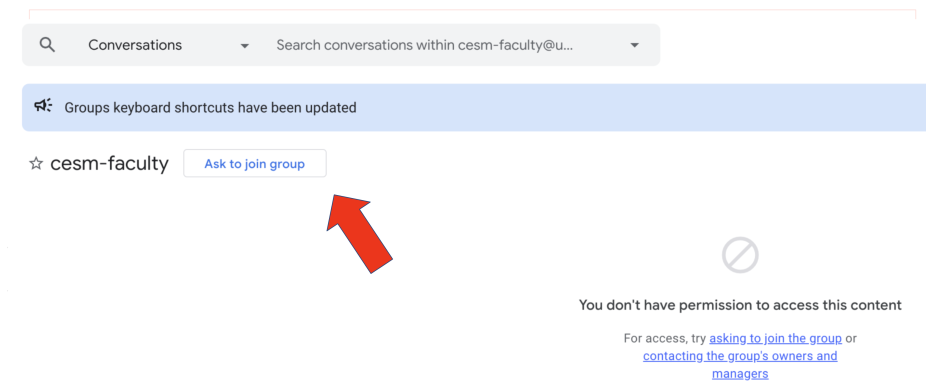Faculty Network for Teaching with CESM
Note: This description of resources is incomplete as of 6/5/2025 and will be undergoing further development in the next few weeks. Please refer to each section for the date of the latest update.
This webpage collects information and resources intended to help university faculty get setup to best utilize CESM, its component models, or simpler models in undergraduate and graduate coursework. Through the creation of a Faculty Network for Teaching with CESM, we also hope to facilitate sharing of information and resources between faculty members and to learn how to improve ease-of-use for CESM for educational purposes.
Options for computational resources
Section last update: 6/9/2025
- Derecho
- Classroom allocations
- CISL offers opportunities to undergraduate and graduate faculty and instructors at U.S. 2- and 4-year institutions to use NSF NCAR HPC and analysis resources in their courses in Earth system science and related areas. Individual accounts are provided to all students and the instructor(s), so be sure to allow at least a week for setting up accounts. Very large classes may require more setup time. NSF NCAR can provide consulting assistance to the instructors.
- Classroom Allocation Requests can be submitted at any time and decisions are generally made within a few days.
- Allocation requests are typically on the order of ~500K core-hours
- Example allocation request
- Classroom allocations
- Porting CESM to University Clusters
- Slides: "Porting and Validating CESM 2.1.x"
- CGD/CISL staff are available to help too!
- Clouds & Containers:
- Clouds offer 'on-demand' clusters & JupyterHubs for classroom / workshop use.
- NCAR Cloud ("CIRRUS") - Good for simple / coarse resolution models (free to use)
- AWS - Good for a range of use (cost scales with duration, number of users, etc.
- Containers run on local hardware (laptops / desktops / workstations)
- Great for local development of coarse resolution or simple models
- Optional JupyterLab environment can be included
- Reach out for help with current versions; supported launches coming soon with CESM3
- Clouds offer 'on-demand' clusters & JupyterHubs for classroom / workshop use.
Tutorial material
Section last update: 9/24/2025
The links below provides up-to-date tutorial materials. Older tutorial materials can be found on the CESM tutorial website.
These tutorials are intended for users who plan to use CESM in their research or teaching. They are not tutorials designed for using CESM to teach Earth System Science in the classroom. For resources focused on CESM in the classroom, see below the DiscussCESM forum for faculty and the contact information for networking with other faculty who may have taught such courses.
CESM Tutorial at NCAR (1-week Summer school)
- Content:
- lectures on simulating the climate system
- practical sessions on running CESM, modifying components, and analyzing data,
- practicals on derecho
- small group discussions with CESM scientists
- student networking - Agenda/presentation slides
- Lectures on YouTube
- Practical Materials (works for CESM2.1.5)
CESM Tutorial at AGU, AMS (½ day tutorial)
- Content
- Focused on running CESM
- Practicals on amazon cloud - Practical Materials
Configuration options
For CESM2 configurations see the CESM2 component set page.
For idealized configurations see the CESM simpler models webpage.
Computational performance
We support a wide number of configurations; here are a few common ones shown, with their costs:
|
Compset |
Core-Hours / Year |
Years / Classroom Allocation |
|
QPC4 (CAM4 aquaplanet) |
211 |
2,372.5 |
|
QPC5 (CAM5 aquaplanet) |
1,055 |
474.1 |
|
QPC6 (CAM6 aquaplanet) |
1,637 |
305.5 |
|
QPC7 (CAM7 aquaplanet) |
1,718 |
291.1 |
|
B1850 (CESM2 piControl) |
3,513 |
142.3 |
|
BLT1850 (CESM3 low top piControl) |
6,297 |
79.4 |
|
BMT1850 (CESM3 mid top piControl) |
11,160 |
44.8 |
DiscussCESM forum for faculty
Section last update: 4/18/2025
- Use this link to access the DiscussCESM forum page to access the Faculty Network for Teaching with CESM area under the Non-component-specific topic
Contact information for faculty in networking
Section last update: 6/6/2025
- Use this link to join the CESM Faculty communication list.

- If you have questions about how to get started or recommendations or requests for additional information, please contact Elizabeth Faircloth (fair@ucar.edu) and she can help point you in the right direction.